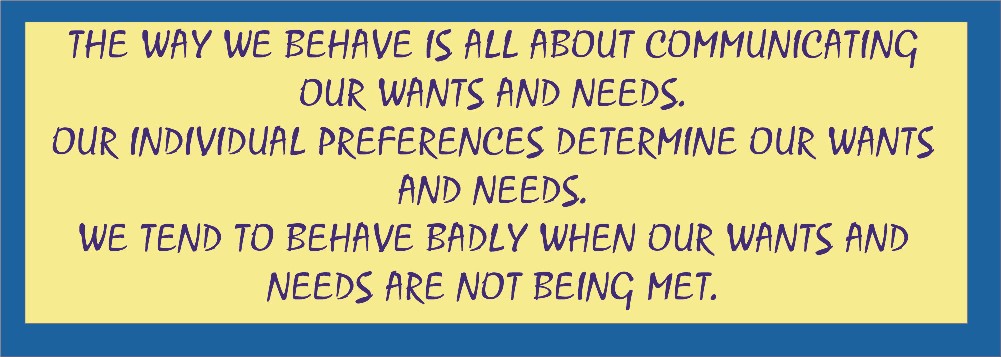|
Baseline Instruction
Assuming that the sample person can do only one of the most
basic items from each domain, a score of 12 would result.
Instruction can then be designed based on a
“strengths/weaknesses” hierarchical theory.
Verbal Communication 1. – Assume that the sample person
cannot use between 1 and 5 verbalizations to communicate needs.
Why not? Does
the person have a communication disorder or are there cognitive or orthopedic
impairments preventing verbalizations?
What
accommodations and supports are appropriate for this person?
Written
Communication 1. – Assume that the sample person cannot use a pencil
or pen to make marks on a piece of paper.
Why not? Does
the person have a vision, a cognitive or an orthopedic impairment preventing
verbalizations?
What
accommodations and supports are appropriate for this person?
Assistive/Augmentative Expression 1. – Assume that the
sample person cannot use an adaptive device to make a choice.
Why not? Has the person been assessed for
ability to benefit from assistive/ adaptive communication devices?
What
accommodations and supports are appropriate for this person?
Electronic
Communication 1. – Assume that the sample person cannot use a
telephone to dial 911.
Why not? Does the person have a communication
disorder or are there cognitive or orthopedic impairments preventing
verbalizations?
What
accommodations and supports are appropriate for this person?
Self-regulation 1. – Assume the person cannot be safely
left alone for up to five minutes with adults nearby.
Why not?
Does the person have a behavior disorder or are
there cognitive or orthopedic impairments or medical issues preventing safety?
What
accommodations and supports are appropriate for this person?
Spatial Concepts 1. – Assume that the sample person cannot
tell when one object is closer than the other.
Why not?
Does the person have a vision, a cognitive or an
orthopedic impairment preventing spatial awareness?
What
accommodations and supports are appropriate for this person?
Numeric Concepts 1 – Assume that the sample person cannot
group objects together by common colors.
Why not? Does
the person have a vision or a cognitive impairment preventing awareness of
colors?
What
accommodations and supports are appropriate for this person?
Vocational Concepts 1 – Assume that the person cannot order
three items from first to last.
Why not? Does
the person have a vision, a cognitive or an orthopedic impairment preventing
ability to sequence items?
What
accommodations and supports are appropriate for this person?
|








 Send mail to -
Send mail to -